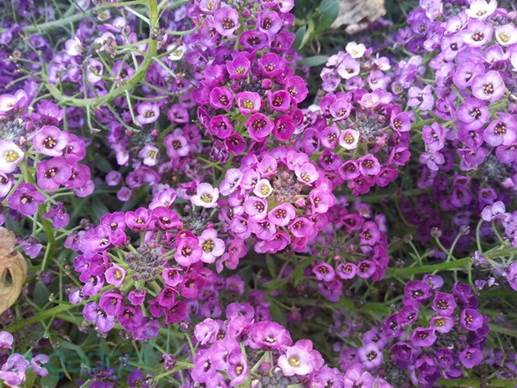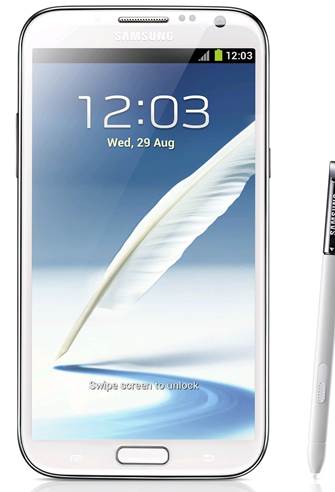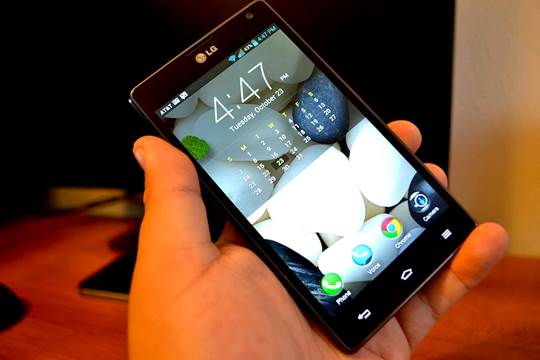Camera
Samsung cameras need very little
introduction, since the company's hi-end models often have a good job of
speaking for themselves. The company chose 8MP sensors since the days of
the Galaxy S II and – despite not having any progress in the war of
megapixel – it continues to create some of the best cameras in the market.
The module on the Galaxy Note II (global and T-Mobile version) is identical to which
is found on the GS3, meaning you have a similar experience.

Samsung
cameras need very little introduction, since the company's hi-end models often
have a good job of speaking for themselves
According to TouchWiz protocol, the Note
II's camera has various settings to modify photos in the way you want. Shooting
modes like HDR, low light, panorama, smile shot, face detection, buddy photo
share… are included, as well as a "best face" mode, letting you take
a bunch of shots of your friends or family, and then pick the best face for
each person. Above these features, you can have limited choices of ISO (up to
800 is supported), white balance, light metering and exposure / contrast
adjustment. Many scenes are available, such as candlelight, text, autumn
colors, party, sunset etc…
Burst shot mode is also available, but
there's one disappointing limitation: you can't use the shooting button to lock
exposure or focus when this mode is activated. Of course, it can be switched
off in the settings but you can't use the toggle switch as one of the
customizable shortcuts on the sidebar.
We got what we expected from T-Mobile Note
II – similar results as the Galaxy S III and global Note II with very little
differences from firmware changes. The resulted images were very detailed with low
noise and weren't overly saturated, especially in comparison with the previous
Note. We were also satisfied with the dynamic range in the photos, as well as
HDR performance. Low-lit shots, when using the Note II's new dedicated shooting
mode, were among the best we've found on a phone. We couldn't pick out much
noise in the photos, it do a great job of collecting backlight and the LED
flash is bright enough to deliver natural colors.
Note II records 1080p videos in MPEG-4
format, with AVC profile 4.0, 17Mbps bit speed and 30fps frame rate. Besides, it
can capture hi-resolution photos while recording. If you wait until the video
has been recorded, you can still capture a scene of that film with the
identical resolution during recording process (in other words, 1080p videos will
reward you 1080p still images at your favor). Specs are similar to the device’s
T-Mobile version, and we see it offers totally smooth movie scenes and catch
sound well but there’s not much background noise such as winds, vehicles… We
encountered similar problem with a shaken result while panning the camera from
side to side, but the majority of that hardly happens as it’s hard to hold the
phone firmly.
Performance and battery life
It’s easy to know how we feel about Note
II’s performance in the global version review, as there’s really nothing
negative to say about it. The phone has a quad-core Exynos 4412 1.6GHz CPU
supported by Mali-400MP GPU and 2GB of RAM. At then, its real opponent was
Qualcomm APQ8064 Snapdragon S4, which also provides an amazing performance (as
you saw in LG Optimus G review). We don’t often feel needing to use any of
Google’s selective words to express your experience, but using Note II appears
incredibly fluent, and it’s fun to experience. Multi-tasking, Popup Video, full
S Pen experience and everything in the middle weren’t stuck, offering stable
output without lagging, stuttering, delays or bugs that are indications of a
below-standard processor.
Using T-Mobile II is nearly the same,
there’s no surprise with any one. Basically, the only differences you will see between
N7100 and US models will be based on software; the chips are identical, so any
visible differences will all be the results of any change done. Benchmark
interested users will like the following that we prepared for you.
Samsung
Galaxy Note II N7100
·
Quadrant: 6,819
·
Vellamo v2.0: 1,831
·
AnTuTu: 13,539
·
SunSpider 0.9.1: 1,023
·
GLBenchmark 2.5 Egypt 1080p Offscreen (fps): 17
·
CF-Bench: 15,267

Samsung
Galaxy Note II N7100
Samsung
Galaxy Note II T889
·
Quadrant: 6,695
·
Vellamo v2.0: 1,759
·
AnTuTu: 13,602
·
SunSpider 0.9.1: 1,059
·
GLBenchmark 2.5 Egypt 1080p Offscreen (fps): 17
·
CF-Bench: 15,186
Samsung
Galaxy S III (T-Mobile)
·
Quadrant: 4,853
·
Vellamo v2.0: 1,517
·
AnTuTu: 6,765
·
SunSpider 0.9.1: 1,764
·
GLBenchmark 2.5 Egypt 1080p Offscreen (fps): 13
·
CF-Bench: 8,759
LG
Optimus G (AT&T)
·
Quadrant: 7,531
·
Vellamo v2.0: 1,704
·
AnTuTu: 11,284
·
SunSpider 0.9.1: 1,283
·
GLBenchmark 2.5 Egypt 1080p Offscreen (fps): 31
·
CF-Bench: 14,372

LG
Optimus G (AT&T)
Very few smartphones take full advantage of
the processor’s power, but the latest Note of Samsung tries its best to push
Exynos chipset to the limit. While none of US models has Multi-Window feature
at first launch, there’re still many other features using 4 cores at the same
time. The ability of having many popup apps running simultaneously while
allowing you to run other tasks below is the real challenge of Exynos – and it
passes easily, nearly creating no delay during this process. Playing
heavy-graphic games is another way to see what SoC was made of, and some
missions in Dead Trigger showed it was completely able to deal with load.
The runtime of T-Mobile's model suffers the
same treatment as the phone's performance. It uses the same 3,100mAh battery
that we also had on N7100, and with most of the hardware factors staying similar,
the only difference we would mention here lies in the firmware and how well the
service provider has actually optimized it. Our video test – the standard
benchmark including play-backing a video at 50% brightness, with push email and
regular social media notifications activated – gave us 11h 30min out of
T-Mobile's version. Compared to 10h 45min of N7100, it's a stable improvement.
Real-life usage also appears as legendary as its international duplicate, granting
us two nearly full days with moderate usage.
Call quality was above average, even when
we were in areas with signal which was less than suitable. If you are deep in a
building with mostly no signal, at least T-Mobile's version of the Note II
offers Wi-Fi Calling, which gives you a an advantage over the other networks –
of course if you are in range of an open hotspot. The speakerphone, as
expected, was quite loud and perfectly meets our needs.